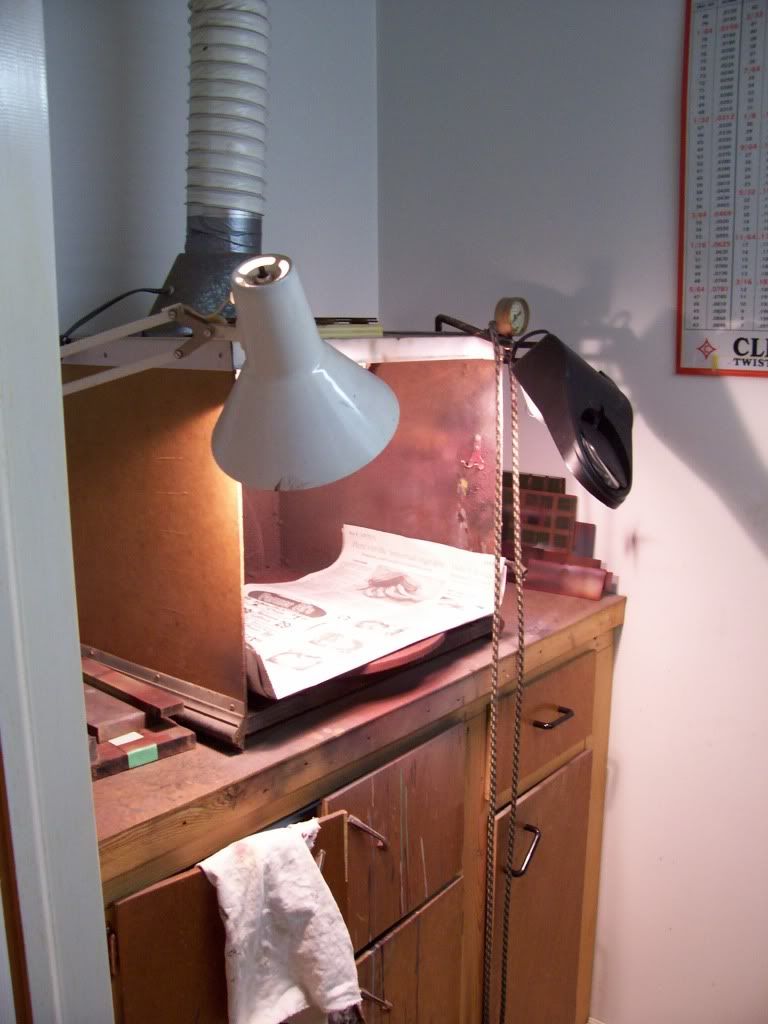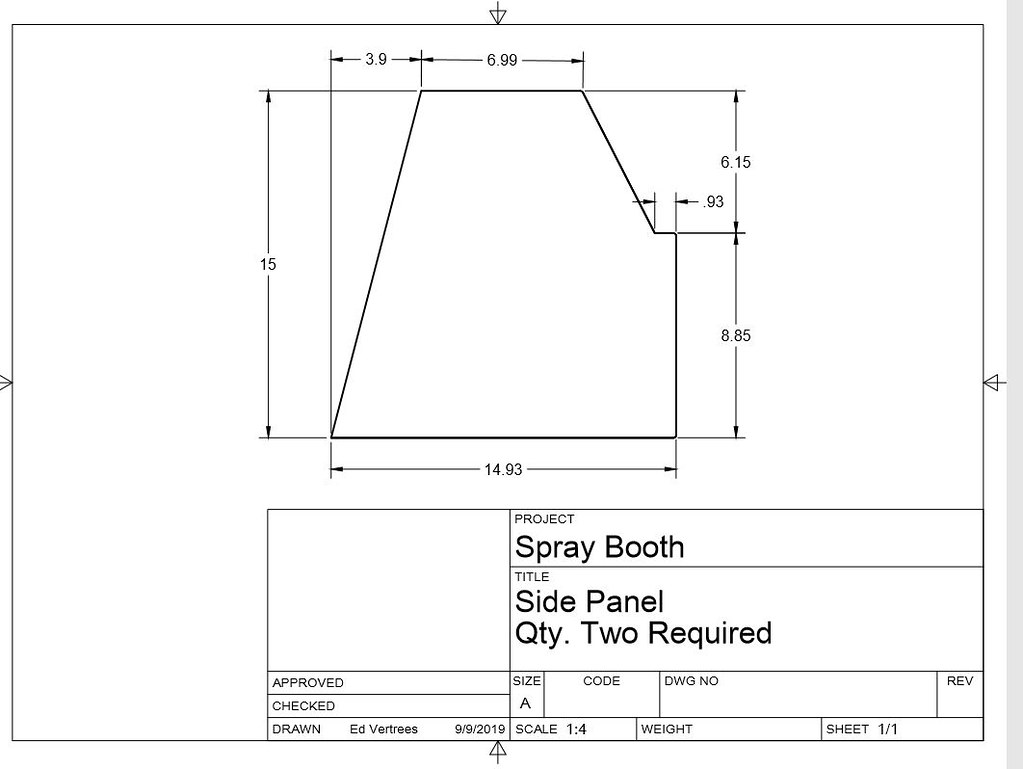Nice and neatly done, but I often wonder why yours (and most commercially-available spray booths) place the exhaust in the back of the booth, where it’s often subject to paint sprayed directly at it.
The purpose of the exhaust fan is primarily to remove vapours created by the thinners as painting occurs. With it in line with at least some of the sprayed paint, the filter will clog rapidly.
I also built a homemade spray booth, but used materials which I had on-hand: part of the top of an old end table as the base, with sides, back, and top cut from leftover 1/8" Masonite, joined together using pop-rivets and some aluminum angle left-over from a drop-ceiling installation.
The exhaust, in the top of the booth, is a plinth from heating duct, with a surplus fan from an air hockey game installed in it.

The ducting shown is flexible plastic clothes-dryer duct, but what I use now is regular aluminum heating duct. Mine is vented directly to the outdoors, and I have a closeable inlet in the paint room to allow for make-up air when the exhaust is running. The original set-up was in a workshop in the basement, and the fan sometimes struggled because the house is rather tight, with little air leakage able to get in.
The current set-up is in a dedicated room in my detached garage, so I can paint at any time, day or night, without disturbing anyone in the house or the neighbours.
I use one half of a standard-size fibreglass furnace filter in the top of the booth, changing it when necessary. It does collect some paint particles, as I’m usually holding the item to be sprayed, rather than having it sit in the booth, but I never have need to spray directly towards the exhaust.
I’d say the total cost was zero, but only because everything used was on-hand.
It’s been in use for close to 40







